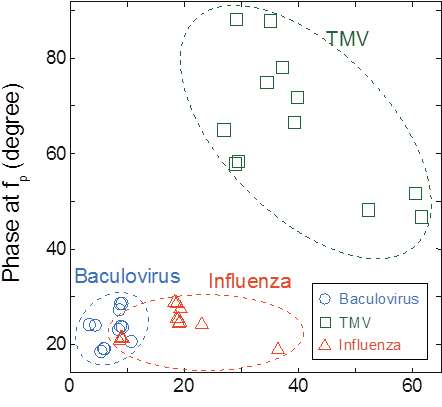Sensing viruses by exploring their electrical properties

Our living sphere is exposed to a wide range of pathogenic viruses—some known and others of novel origin.
Currently, there is no method to continuously monitor the environment for viruses in general, and needless to say, a procedure for the rapid and sensitive identification of a wide variety of viruses for infectious diseases. Traditional approaches based on PCR and immunoassay only enable the detection of known viruses.
Now, Ryuji Hatsuki and colleagues at have developed a simple sensing methodology that can potentially detect any virus between the spacing of two electrodes with an intervening several hundreds nanometer-sized gap by measurement of electrical properties of viruses known as impedance spectroscopy.
The sensing device was fabricated on a quartz substrate patterned with two measurement electrodes of thin film of gold (250 nm thick) deposited on titanium (1 nm thick); a polydimethylsiloxane (PDMS) sheet forming the measurement chamber wall; and a glass plate as the chamber lid.
The researchers discovered that the impedance of three kinds of virus solutions—differing in shape and size—responded differently depending both on the kind of virus and its concentration.
Although further studies are required, the proposed method may achieve a sensitivity comparable to that of more traditional, but less versatile continuous virus detection methods, to monitor a wide range of environments for untroubled living conditions.
More information: Ryuji Hatsuki et al. Nonlinear electrical impedance spectroscopy of viruses using very high electric fields created by nanogap electrodes, Frontiers in Microbiology (2015). DOI: 10.3389/fmicb.2015.00940
Provided by Tokyo Institute of Technology




















